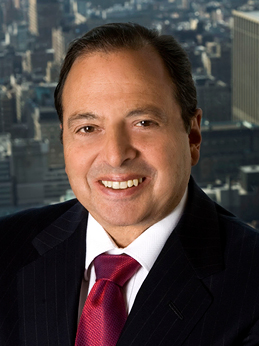Earlier this week, The Commercial Observer reported on an article that appeared in New Republic, which questioned the energy efficiency of the Bank of America Tower, also known as 1 Bryant Park.

In an email sent to The Commercial Observer yesterday, Douglas Durst, chairman of The Durst Organization, acknowledged there are “problems” with the LEED system, but defended the efficiency of his tower.
Mr. Durst denied that the LEED rating system is flawed for the reasons argued in the New Republic article (and summarized in the CO) – mainly, that the ratings are based on “computer models,” with emphasis on design rather than usage after the building is occupied.
“While there are problems with LEED that are being corrected in the next version, [this] is not one of them,” Mr. Durst wrote. “The base building and tenant operations are two distinct issues.”
“Plus, saving 10 million gallons of water each year is not an ‘easy’ task,” he added. “The Empire State [Building] uses less energy because it has substantial vacancies.”
“Finally, it is the concentration of energy intensive use that allows 1 Bryant Park to be so efficient,” Mr. Durst stated. “The building manufactures 80 percent of the energy it consumes in a co-generation plant in a process that is twice as efficient as utility generated electricity.”
Citing city data, the New Republic article argued that, despite an LEED-Platinum certification and praise regarding its sustainability from the press, Al Gore, Mayor Michael Bloomberg and his administration, the building “produces more greenhouse gases and uses more energy per square foot than any comparably sized office building in Manhattan,” and twice as much energy per square foot as the Empire State Building.
The point system used by the LEED, though taking into account building materials, air quality, water conservation and energy performance, allows developers to rack up points for “easy” measures, like working with a LEED-accredited professional, building near public transportation, and protecting or restoring habitat in Bryant Park, the author also argued.
In a separate message sent to the New Republic and pasted below the original story, which was published on its website on July 28, Scot Horst, senior vice president of LEED at the U.S. Green Building Council, stated the following (as it appears on the New Republic site):
“In his rush to criticize LEED by plucking a single example from the 45,000 plus buildings that make up LEED’s global portfolio, Mr. Roudman failed to tell the whole story. He did not explain, for example, that the building generates much of its electricity in it’s basement with a co-generation power plant, recovers waste heat for the various heating needs of the building, and employs innovative ice storage technology to shift grid power use to off-peak periods. As a result, the Bank of America Tower removes stress from the existing electric infrastructure far more effectively than comparable buildings. It also eliminates distribution losses inherent in grid-generated power, avoids consumption during peak periods and uses natural resources in a significantly more efficient way than many other buildings.
If Mr. Roudman wants to tell an accurate story, he needs to explain the impact of these strategies and how they compare to other similar sized trading floors and similar building types in the city and other cities around the world. LEED encourages project teams to implement these types of strategies. The Bank of America Tower is an icon of innovation. Can they do more? Yes. Are they leaders? Yes. Is Mr. Roudman telling the whole story? No. Period.”


